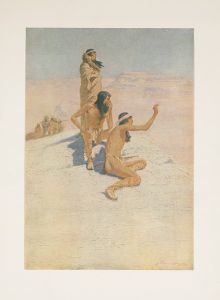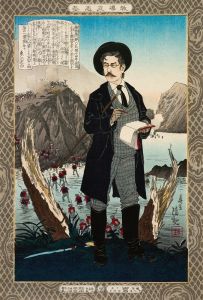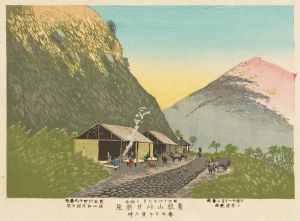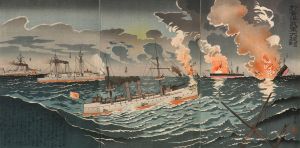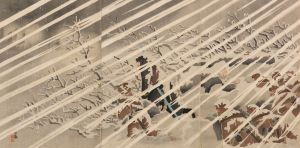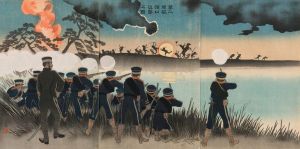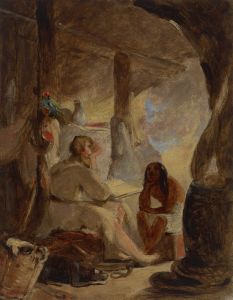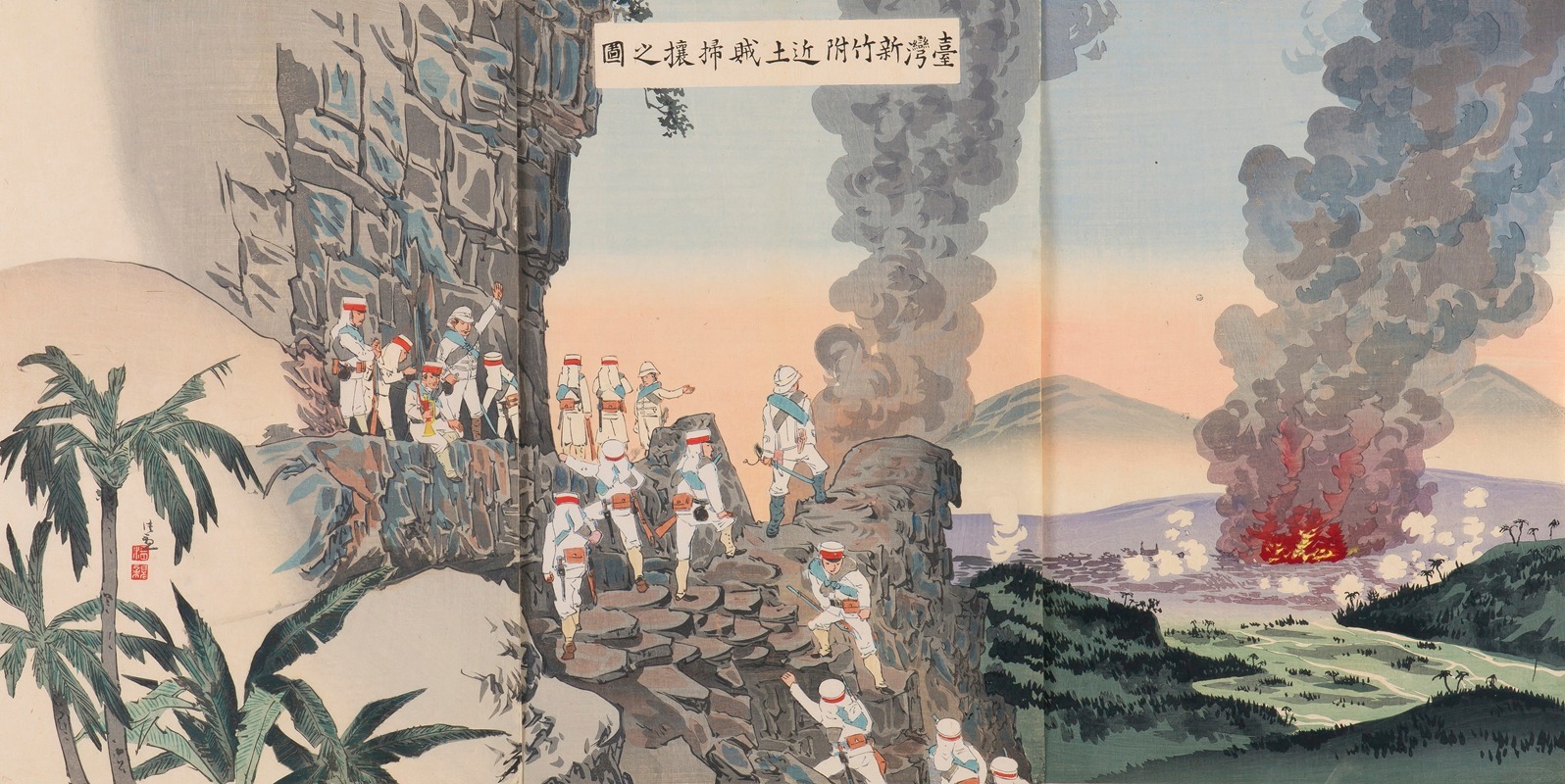
Native Bandits Being Swept up in the Vicinity of Xinzhu in Taiwan
A hand-painted replica of Kobayashi Kiyochika’s masterpiece Native Bandits Being Swept up in the Vicinity of Xinzhu in Taiwan, meticulously crafted by professional artists to capture the true essence of the original. Each piece is created with museum-quality canvas and rare mineral pigments, carefully painted by experienced artists with delicate brushstrokes and rich, layered colors to perfectly recreate the texture of the original artwork. Unlike machine-printed reproductions, this hand-painted version brings the painting to life, infused with the artist’s emotions and skill in every stroke. Whether for personal collection or home decoration, it instantly elevates the artistic atmosphere of any space.
"Native Bandits Being Swept up in the Vicinity of Xinzhu in Taiwan" is a woodblock print created by the Japanese artist Kobayashi Kiyochika during the late 19th century. The artwork is part of a series of prints that depict events from the Japanese invasion of Taiwan in 1895, following the First Sino-Japanese War. This conflict resulted in the Treaty of Shimonoseki, in which the Qing Empire ceded Taiwan to Japan. The print reflects the Japanese perspective on their military campaign to suppress local resistance in Taiwan during the early stages of Japanese colonial rule.
Kobayashi Kiyochika (1847–1915) was a prominent ukiyo-e artist known for his innovative approach to traditional woodblock printing. He is often recognized for his works that document historical events and urban scenes, blending Western-style realism with traditional Japanese aesthetics. This particular print is part of his oeuvre that focuses on military subjects, showcasing Japan's modernization and military prowess during the Meiji era.
The artwork portrays a scene in which Japanese forces are depicted subduing local resistance fighters, referred to in the title as "native bandits," near Xinzhu (modern-day Hsinchu) in northern Taiwan. The term "native bandits" was commonly used by Japanese sources at the time to describe Taiwanese insurgents, including Han Chinese and Indigenous groups, who resisted Japanese occupation. The print likely served as propaganda to emphasize Japan's military strength and the perceived righteousness of its colonial endeavors.
Stylistically, the print combines traditional ukiyo-e techniques with elements of Western perspective and shading, reflecting the transitional nature of Japanese art during the Meiji period. The composition is dynamic, with a focus on the movement and action of the Japanese soldiers, who are shown in modern military uniforms, contrasting with the more traditional appearance of the local fighters.
This artwork provides insight into the Japanese perspective on the colonization of Taiwan and the broader cultural and political narratives of the time. However, it is important to note that such depictions were often one-sided and served to legitimize Japan's imperial ambitions. The experiences and perspectives of the Taiwanese people, particularly those who resisted Japanese rule, are not represented in this print.
Today, works like this are studied as historical artifacts that reflect the complexities of Japan's imperial history and the role of art in shaping public opinion during the Meiji era.





